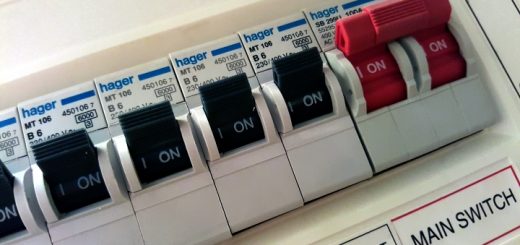The changing home improvement market – a leading online retailer shares its insight on all the key trends

Improving the condition of one’s home and customising it to suit unique lifestyles and preferences can often requires renovation – more serious and expensive than mere maintenance work.
However, a person must have a home to begin with before any renovation or maintenance can arise. The government’s recent announcement of building at least a million homes in the next five years is a faint echo of Gordon Brown’s ambitious declaration of completing three million by the year 2020, and reflects the serious housing crisis many Britons are facing.
On the other hand, it spells opportunity for the construction industry and, in turn, for the home improvement market, which saw a major slump for the first time in decades during the 2008-09 period, due to the financial crisis of that period, but has recorded an upward curve – largely remaining above the danger mark – in the years since.
The tremors
For a home improvement industry heavily dependent on construction and refurbishing, the failure of government schemes that directly impact its business is never a good sign.
For instance, the Green Deal folded recently, not for lack of enthusiasm on the part of the households it was looking to attract, but because of the inherent fault in its design.
There is also a threat to the DIY retail business, with 60 of B&Q’s 360 outlets heading for closure and a quarter of Homebase’s estate of 323 being phased out. It looks ominous when two of the biggest players – which roughly account for 50% of the £14 billion home improvement market – are pre-occupied with survival strategies.
Both Homebase and B&Q lament the fact that young Britons don’t have the kind of passion or skill for DIY projects that earlier generations did, but the head of B&Q’s parent company, Kingfisher, Veronique Laury, has shown tenacity and business acumen to counter the adverse wave, by investing in a learning centre that imparts DIY skills in the hope of retaining and reviving the once-popular practice amongst homeowners.
On the other hand, the Home Retail Group, owner of Homebase (at least until its impending sale to Australian retailer Bunnings Warehouse is completed), is rather focused on reviving its recently acquired soft-furnishing brand Habitat, which it has begun promoting through its own Homebase chain as concession stores alongside three Habitat showrooms it bagged during the acquisition.
Pre-empting customers’ fancy
As the cloud of despair unnerves the biggest names in DIY retail, online sales have yielded encouraging results for many. Indeed, ecommerce in the home improvement space has become a top priority for Home Retail Group, looking to establish and consolidate its position amongst stiff online competition, and where Kingfisher’s online brand Screwfix already enjoys an enviable position.
In a market flooded with buying options, it becomes necessary for manufacturers and retailers to be both innovative and attractive, in order to influence the buyer and move beyond the standard conventions of need-based consumption – creating instead demand based on aspiration and lifestyle.
The traditional method of employing an image of the product with a smart tag line is insufficient on the rich and neutral platform of the Internet, where information is the most valued commodity, and a supply of relevant and exhaustive information is necessary.
Even stores, situated in the best of locations, are bound to struggle in the face of stiff competition from online rivals that offer heavy discounts and an easy returns policy but don’t have the same requirement to invest in infrastructure and well-trained staff.
Retail giants that once swallowed small hardware shops are now faced with a dynamic market and an even more dynamic sales and marketing platform, which allow even a modest enterprise an equal chance of engaging with the customer and delivering a favourable outcome.
The stage for bathrooms
Of all the segments in the home improvement market, the bathroom sector receives some of the most enduring attention from customers, and has proved to be a launchpad for a host of designers that specialise in every possible facet of this domain.
It is interesting to note that London is considered the world leader in bathroom fashion. It houses the leading brands in the business and architectural consultants that are busy shaping new trends on the canvases of luxury hotels.
In homes, too, the number of bathrooms demanded per household has risen nationally – a never-before-seen phenomenon that, according to industry insiders, has its origins in consumers’ search for better designs to address issues of energy consumption, water preservation and ergonomics.
Of course, aesthetics remain one of the premier motivations behind every renovation, receiving trickles of inspiration from those trendsetting themes.
The wise customer
While the bathroom sector continues to flourish, home improvement as a whole has many reasons to retain its optimism since the 2013 upsurge in the UK building industry.
The failure of convoluted schemes like the Green Deal nevertheless managed to raise energy efficiency awareness amongst households, who have proved to be smart in identifying immediate minor repair work that needs fixing. The market witnessed a good deal of renovation on old properties from 2014 onwards, which is a clear indication of the customer’s willingness to spend on their own terms.
As the government continues to grapple with the country’s housing crisis, new housing projects – which consistently lag behind the annual requirement of 240,000 new homes – are likely to yield home improvement projects periodically.
Migration driving ‘do it for me’
It is interesting to note that rising numbers in the migrant population, which, among many other factors, is one of the contributors to the shortage of homes, stands at 2.1 million since the year 2000.
This population consists of the one-million-strong east European migrant community whose skilled building professionals have made a significant impact on the dynamics of the DIY retail business. Their arrival has tilted the balance in favour of the building and home improvement merchants, such as Travis Perkins, that cater for professional builders and plumbers who execute DIY jobs in a highly efficient and cost-effective manner.
While this has caused the DIY retail giants to shut some of their stores, it has conversely boosted Travis Perkins’ market share and allowed its Wickes chain to open additional sites.
The east European skilled builders have ushered in the “do it for me” (DIFM) era, stealthily replacing the DIY culture, which is arguably on its last legs. The lack of purchasing power has forced most young, working Britons to rent homes, which, along with busy lifestyles, leaves little motivation to undertake DIY tasks.
Hunting for more
The format and players might have changed, but the essence of home improvement is unshaken. For those who have the money to spare, the motive of generating profit through renovation remains.
A good number of renovation projects are also expected to commence as a result of retired pensioners investing in property, after a recent change in the law awarded them full control over their retirement savings.
It is evident from recent statistics that home improvement concerns are among the top priorities in households that have sufficient savings to upgrade; among those without sufficient funds, the preference is to wait until they are able to save up for it.
Efforts to drive more footfall into showrooms and traffic to websites are evident among the top players in the business, who not only deal in reputed brands but secure accreditations from relevant agencies and bodies considered trustworthy by the industry.
The discerning customer, on the other hand, pays a discreet visit to these tastefully built showrooms, makes a note of particular models that catch their fancy, and gets busy consulting websites that offer the desired model at a heavy discount.
A report by Bathrooms 365










3 Responses
[…] trends Bathrooms 365 also published research surrounding the home improvement market. The article revealed that the government’s new build […]
[…] trends in the home improvement industry Bathrooms 365 carried out further research into the home improvement market, to which they revealed that interest in the industry is on the […]
[…] home improvement trends In further published research, Bathrooms 365 stated that new building projects by the government has created more opportunities […]